Having spent five years photographing along the west coast of Vancouver Island, it’s a place that will always remain close to my heart. British Columbia is Canada’s third-largest and most westerly province, and arguably its most beautiful. Licence plates don the slogan ‘Beautiful British Columbia’ and for good reason – the natural history experience here is immersive, diverse and unforgettable.
The west coast of British Columbia is one of the few places on earth where temperate rainforest meets the ocean. Pacific waves pound rocky headlands and summer sightings of whales are so frequent that some local operators guarantee them. This area is home to 25 per cent of the world’s temperate rainforest; large carnivores such as wolves and grizzly bears still roam among ancient forests while humpback and orca whales patrol the shores of the pacific northwest.
There’s so much wildlife along this small stretch of coast that after five years, I still feel like I've only scratched the surface. Here are some of my favourites.
Explore all our wildlife photography content
Orca
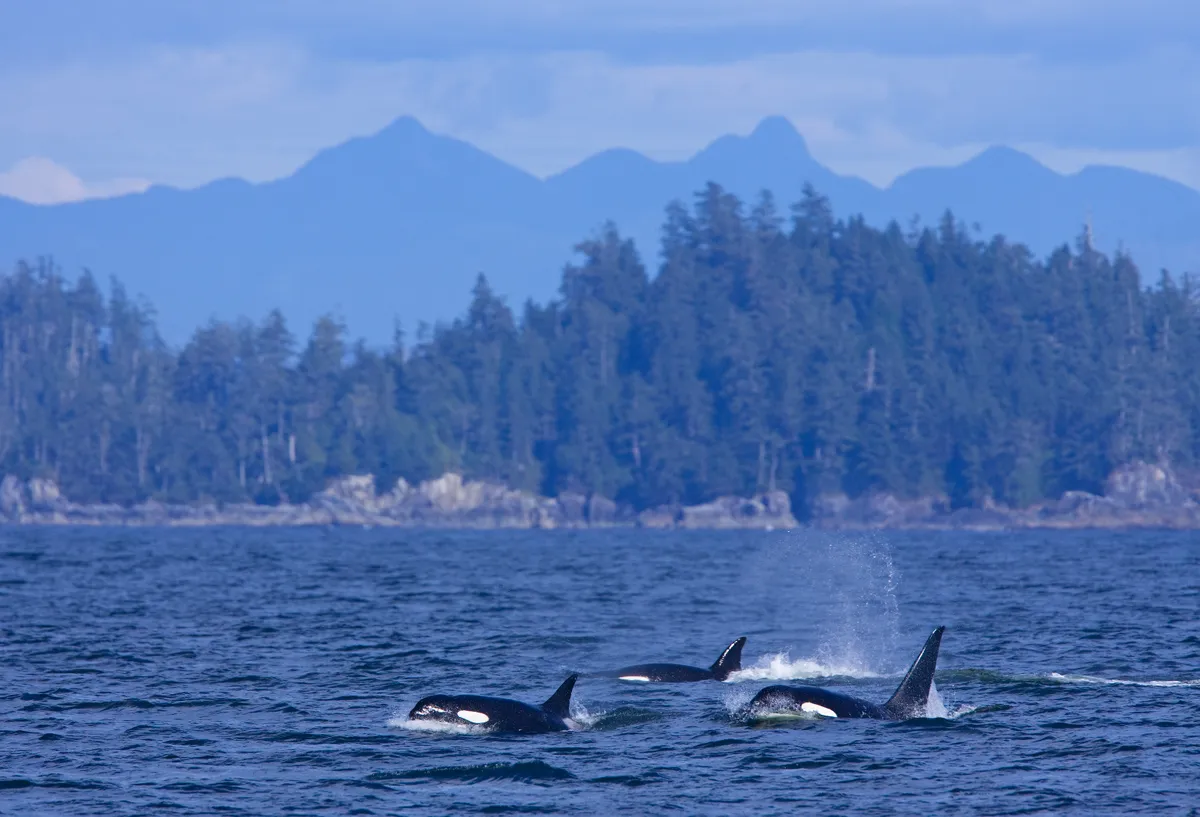
When orcas pass through Clayoquot and Barkley Sounds, there is a buzz in the community - fishermen, biologists and whale-watching operators share information about their whereabouts. I feel like these animals know they are apex predators as they cruise through the water.
Orcas rely on stealth to hunt seals and sealions, so must remain unpredictable to avoid being detected by their prey. When photographing them, I feel this buzz too, and have been lucky enough to have had some wonderful encounters, including seeing a female leap out of the water with a seal in her jaws. Sadly, I missed that particular golden photo opportunity – a common experience for all wildlife photographers – but I've continued to get back out on the water and learn from my mistakes. Persistence usually pays off.
Where to go: Telegraph Cove, Victoria, Clayoquot and Barkley Sound
Things to know: Sightings of resident (fish-eating) orcas are common out of Victoria in the south and Telegraph Cove to the north of Vancouver Island. Seeing orcas on the west coast is a treat as these will most likely be transients (mammal eaters) moving in, stealthily looking to take a sealion or seal. Be careful not to spend too much time looking through a long lens on a moving boat. If, like me, you struggle with your sea legs, sea sickness will set in fast and you’ll end up feeding the fish.
Fieldcraft and photo tips: Orcas move quickly through the water and dives typically range from 5-7 minutes, so tracking them is hard work. Getting good pictures requires persistence and luck, especially with transient sightings being so uncommon. Telephoto or zoom lenses and a camera with a high shooting rate will help to capture great images.
More related content:
- How to win Wildlife Photographer of the Year
- Do orcas go through the menopause?
- Orca guide: diet, how they hunt, and what they’re related to
The intimate touch.©Shane Kalyn (Canada)/Wildlife Photographer of the Year winner 2021, behaviour category, birds.
Humpback whale
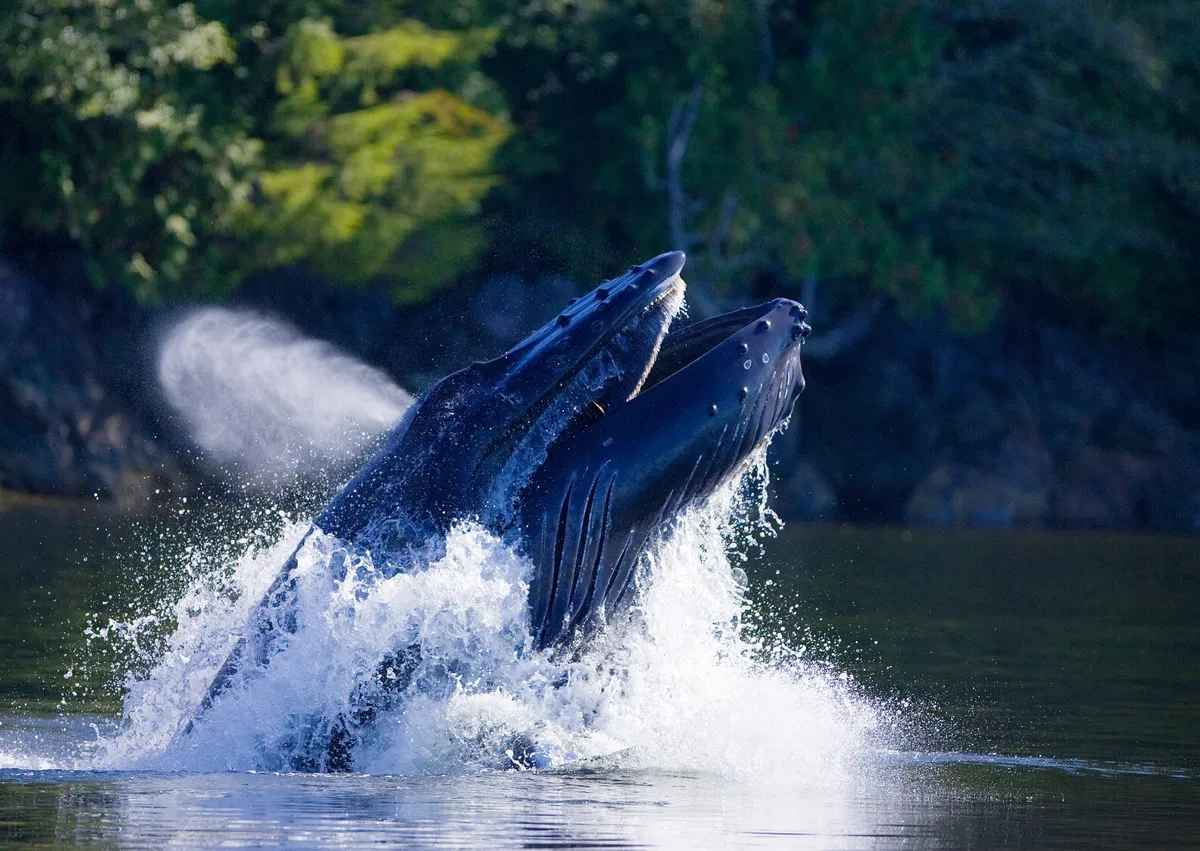
The thrill of encountering a humpback whale from a boat and observing it from water level reminds us just how small we are. These ocean giants range from 12-16m in length and display a wide variety of surface behaviour such as lunge feeding and tail lobbing. However, the sight of one breaching, when it propels itself out of the water and into the air, is magnificent.
I witnessed my first breach back in 2006 and I remember it like it was yesterday. The sight of a 25,000kg whale launching itself out of the water and corkscrewing mid-air before splashing down will stay with me forever. Photographing one, however, is not easy, as humpback whale behaviour is unpredictable.
I witnessed my first breach back in 2006 and I remember it like it was yesterday.
When to go: The best time to see humpback whales is throughout the spring and summer, but September, known locally as the ‘golden month’, offers the best photography opportunities. The weather is more predictable at this time with deep blue skies and less chance of fog – August is locally known as ‘Fogust’. The tourist rush subsides, the seas are calmer and the light is good all day, which makes exposing for decent shots on the water easier to manage.
Things to know: Gray whales are more commonly seen but are less likely to give a spectacular show. Look out for the distinctive hump just before the dorsal fin on the humpback to tell them apart from grays.
Fieldcraft and photo tips: A telephoto/zoom lens of 200mm or above is ample for shooting humpbacks. No need for a tripod on a boat, best to be hands-free and look for patterns of behaviour in the hope of anticipating something dramatic. Fish bubbling at the water’s surface is an indicator that humpbacks are hunting and a lunge feed can happen at any moment, so use this to pre-empt firing the shutter.
Related content:
- Your 60 second guide to humpback whales
- First records of orcas seen killing and eating blue whales
- 10 most incredible marine life experiences
Swimming with humpback whales in Tonga. © Mike Korostelev/Getty
Sea otter
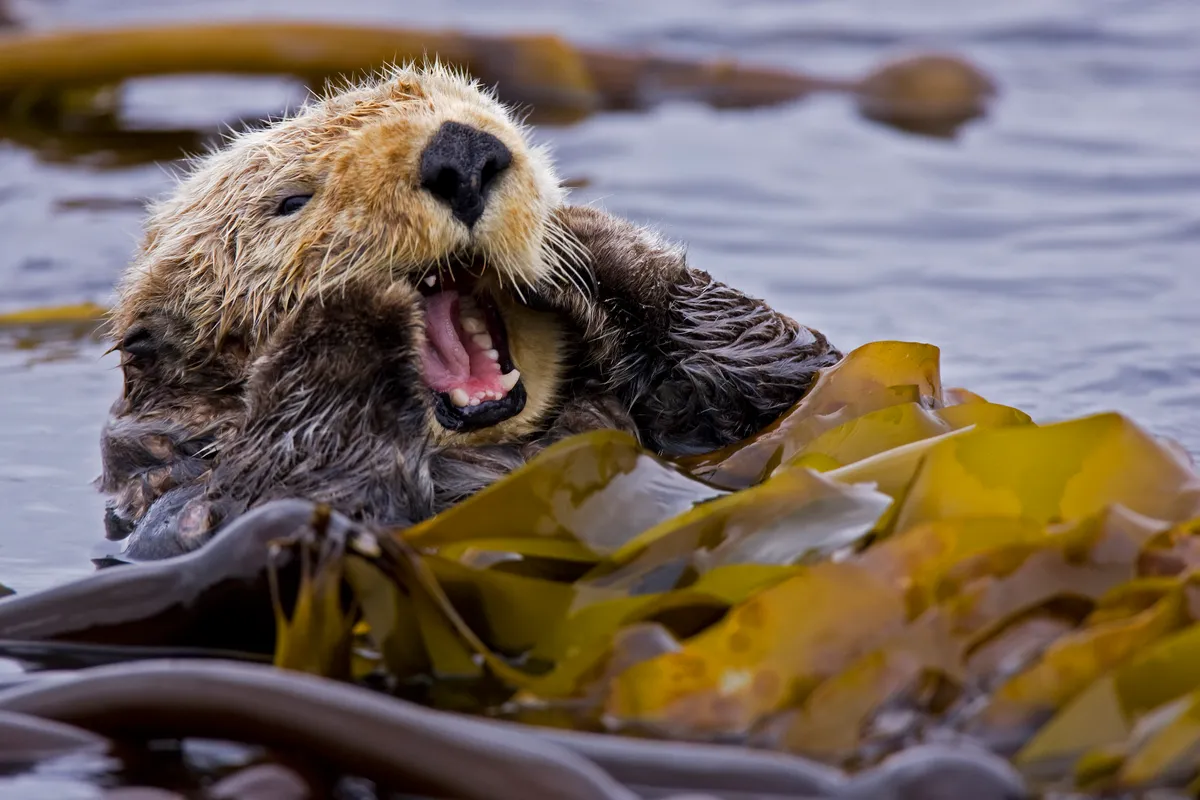
I’m yet to see a red panda in the wild, but ask me the cutest animal I have ever seen and the answer is sea otter, without hesitation. Sea otters are the only marine mammal to rely on fur rather than blubber to keep them warm in the cold ocean temperatures. They are a top attraction and for good reason: the sight of one rolling around on the water’s surface, grooming its fur fastidiously, could warm even the coldest of hearts.
They have the densest fur in the animal kingdom, with over 150,000 hairs per square centimetre. Unfortunately, their fur was seen as a luxury pelt by humans and the population was decimated in the mid 18th century. However, early 20th century conservation efforts halted this decline and relocation programmes in the 1960s helped increase sea otter numbers. There are thought to be over 4,000 sea otters in British Columbia.
When to go: Sea otters can be seen year-round on the west coast of Vancouver Island and Central BC Coast with most local operators closing for winter at the end of October.
Things to know: Sea otters are best seen in the summer swimming among kelp forests. They can have pups any time of year, so if you’re really lucky you might catch a glimpse of young asleep on their mother’s soft front. Sea otters float together in groups call “rafts” and will sometimes hold hands so they can stay together and keep their delicate paw pads warm.
Despite their cute looks, sea otters have a fearsome reputation and have been known to grab cormorants and other seabirds, drowning them before consuming an opportunistic meal.
Sea otters float together in groups call “rafts” and will sometimes hold 'hands' so they can stay together and keep their delicate paw pads warm.
Fieldcraft and photo tips: Capturing smaller, surface-dwelling animals is tricky, especially among the kelp forest as they blend in with the foliage. Photography is best done from a smaller, non-motorised boat such as a Zodiac or kayak. The low angle can help to capture intimate portraits and isolate the subject against the background. Not all excursion operators will have sea otters on their agenda, so ask around.
Black bear
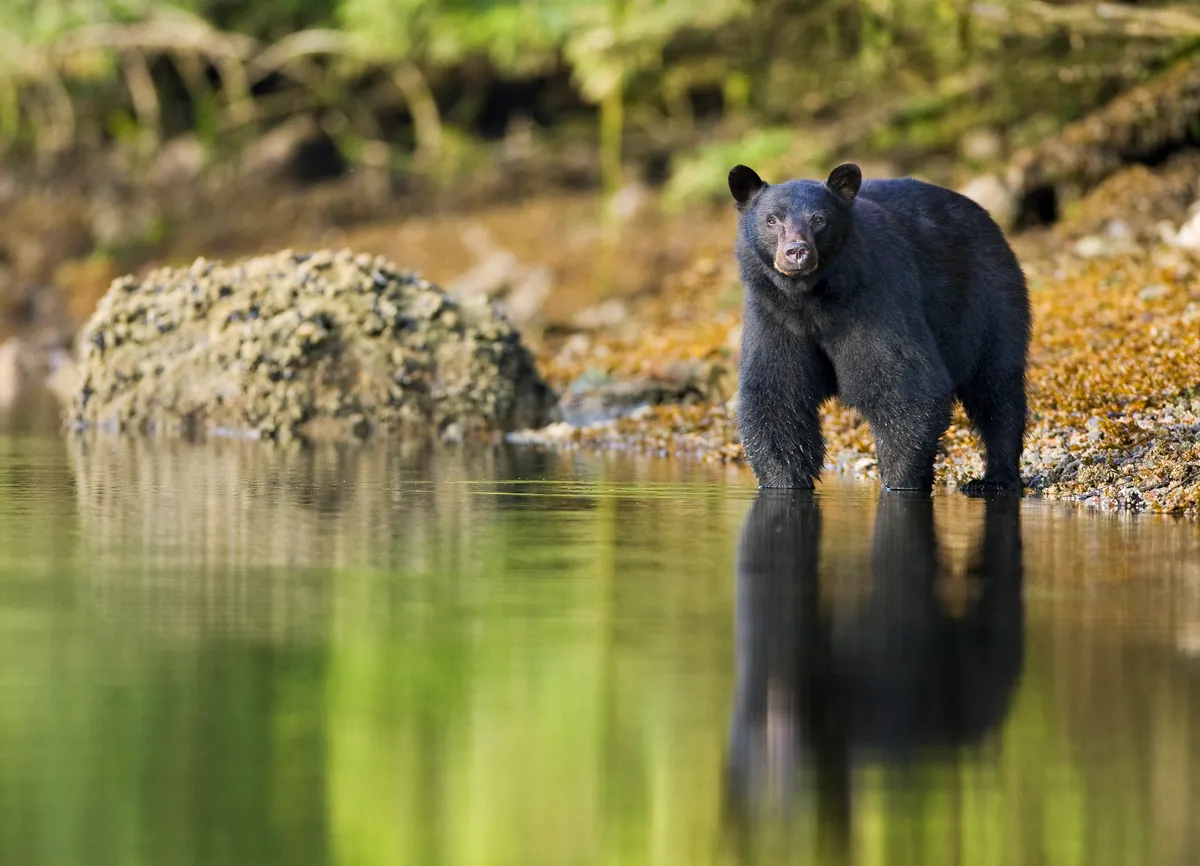
As a kid I dreamt of seeing a bear in the wild. I watched documentaries, looked through magazines and had a teddy bear to help send me off to sleep. To see one patrolling the shores, turning over rocks looking for food, was a dream come true. Everyone wants to see a grizzly, but don’t overlook its smaller and equally charismatic cousin – the black bear.
Black bears are expert tree climbers (grizzlies are less proficient). They eat almost anything and can run very fast. Cubs can be seen in spring, learning the skills they need to survive while foraging alongside their mothers.
Where to go: BC Interior, Vancouver Island. Black bears are found all across the province but the best viewing experience is on a bear trip out of Clayoquot Sound. The inlet waters are calm and sightings from boats quietly cruising the shore are almost guaranteed. Bears emerge from the forest to visit the shoreline to feed on fish, crabs and barnacles exposed at low tide.
Things to know: Attacks on humans are extremely rare but always it’s wise to keep your distance from any wild animal, largely to keep them stress-free.
Fieldcraft and photo tips: Longer lenses 200mm or more can produce impactful pictures but a wide-angle lens will help to show a bear in its habitat. On a dull day ramp up your ISO to 1600 or higher to give you enough speed for hand-held shots.
Related content:
- 12 amazing black bear facts
- Grizzly bear guide: where they live, how they hunt and conservation
- How to avoid a bear attack
Black bear cub descending a tree. © Don Johnston/Getty
Bald eagle
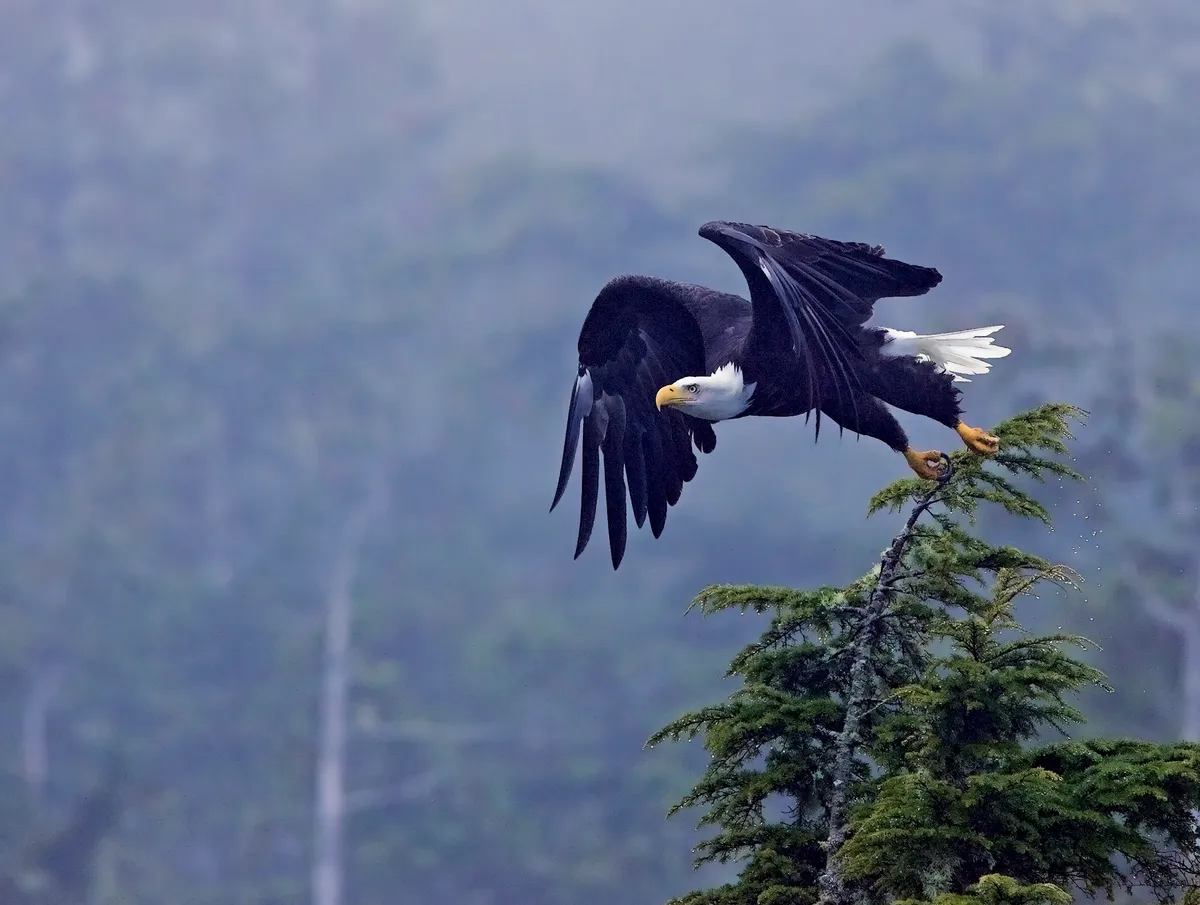
On my first trip to Vancouver Island a local resident told me the trees were “dripping with bald eagles” - and they were right; you’d be unlucky not to see one.
I both loved and loathed the challenge when it came to photographing these raptors. Most of my shots were out of focus and out of frame as the bird flew in the opposite direction I was anticipating. As with so much wildlife photography it’s 99 per cent failure, but we do it for the 1 per cent of the time that a subject delivers.
The characteristic white head and wingspan of more than 2 metres makes these birds relatively easy to spot. Most of Canada’s eagle population is found in BC and to see this charismatic species up close, hunting for fish over the ocean is a delight. ‘Bald’ is an old English word meaning marked with white.
When to go: The lower Fraser Valley is by far the best place to see these birds up close. Thousands gather on the Harrison River to feed on salmon and other fish in November.
Things to know: It sounds silly but don’t forget to look up. On many occasions I witnessed people walking along the forest edge unaware that a bald eagle was perched just above their heads. Look out, too, for their nests - bald eagles make the biggest of any bird in North America and these can weigh up to one ton.
Fieldcraft and photo tips: Use a shutter speed of 1/1000 or higher to capture these beautiful birds in flight. Watch out for their white heads, which can throw your exposure. Underexpose by -2/3 to avoid blown-out highlights.
